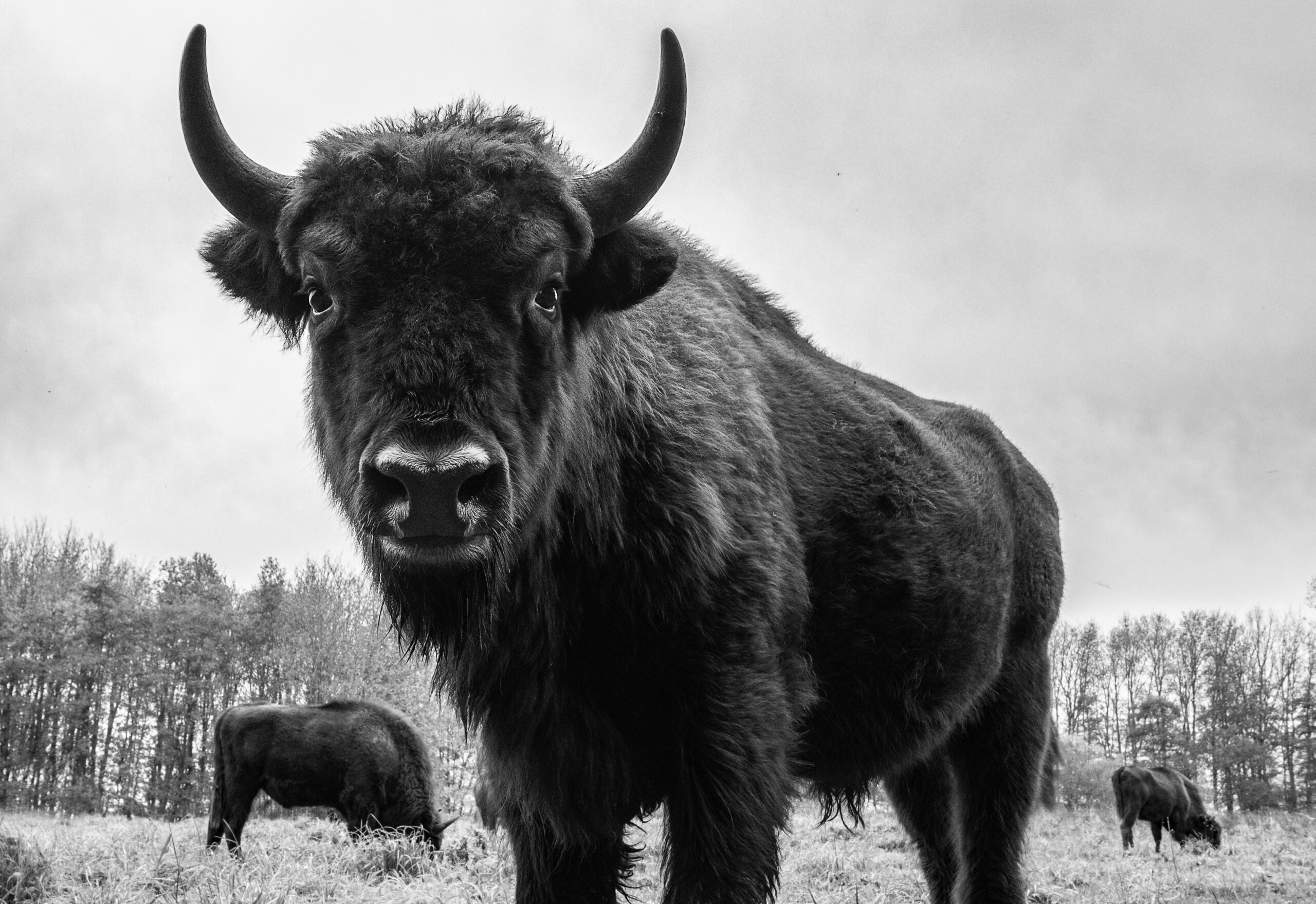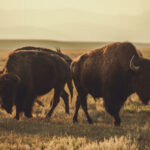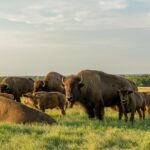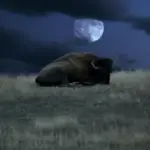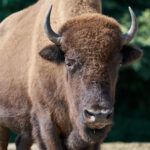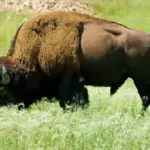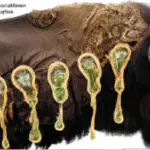Learn about the historical decline of bison populations in the late 1800s and explore the factors that led to their near-extinction. Discover how the actions of settlers, hunters, and government policies contributed to this devastating decline. This article delves into the reasons behind the decline and sheds light on the efforts made to preserve and restore bison populations today.
Historical Population of Bison
Population estimates prior to European arrival
Before European arrival in North America, the bison population was estimated to be around 30 million. These majestic creatures roamed freely across the vast grasslands, playing a vital role in the ecosystem and supporting Indigenous tribes in their traditional ways of life.
The bison population was at its peak due to the abundant resources and lack of significant threats.
Population decline during the 1800s
The 1800s marked the beginning of a catastrophic decline in the bison population. European settlers and their activities played a significant role in the decimation of these iconic animals.
The once-thriving herds were ruthlessly hunted, leading to a devastating loss in their numbers. This decline had far-reaching consequences, impacting both the bison themselves and the delicate ecosystems they inhabited.
The Role of European Settlers
Impact of diseases introduced by settlers
One of the significant factors contributing to the decline of the bison population was the introduction of diseases by European settlers.
Bison had not previously encountered these new diseases, such as bovine diseases carried by domesticated cattle. As a result, they had little resistance to these illnesses, leading to widespread outbreaks and subsequent losses in the bison population.
Settlers’ hunting and overexploitation
European settlers recognized the economic value of bison and embarked on an uncontrolled hunting spree for their hides, meat, and other resources.
The demands of the growing population for bison products led to mass hunting, often characterized by wasteful practices. This unregulated exploitation, combined with the settlers’ lack of understanding of the bison’s ecological importance, further accelerated the decline.
The Westward Expansion
The Impact of Manifest Destiny
Manifest Destiny, the belief that settlers were destined to expand across the continent, played a crucial role in the decimation of the bison population.
As settlers moved westward, they encroached upon the bison’s traditional territories, disrupting their migration patterns and reducing their access to essential resources. This forced interaction between settlers and bison led to increased conflicts and further contributed to the decline.
The role of the transcontinental railroad
The construction of the transcontinental railroad had a significant impact on the bison population. As the railroad expanded, it opened up previously isolated regions for settlement and facilitated the transportation of bison products to distant markets.
This resulted in increased hunting pressure on the bison, as their hides, bones, and meat were highly sought-after commodities. The combination of railroad expansion and settler demands accelerated the bison’s decline.
The Industrial Revolution and Bison Products
Demand for bison hides
During the Industrial Revolution, the demand for bison hides skyrocketed. Bison hides were used extensively in the manufacturing of various products, including clothing, furniture, and accessories.
The scale of this demand put immense pressure on the already-depleted bison population. Hunters, driven by profit, embarked on large-scale hunting campaigns, leaving devastating impacts on the remaining herds.
Utilization of bison bones for fertilizer and other industries
The Industrial Revolution also saw a great demand for bison bones. These bones were used for various purposes, including the production of fertilizer, tools, and even delicate bone china.
Thousands of tons of bison bones were gathered in the Great Plains, resulting in further decimation of the bison population. The exploitation of bison resources during this era pushed these majestic creatures even closer to the brink of extinction.
Livelihood of Indigenous Tribes
Bison as a critical resource for Native American tribes
For centuries, bison sustained Indigenous tribes across North America, providing them with food, clothing, and materials for shelter and tools.
Bison hunting was not merely an economic activity but also deeply intertwined with cultural and spiritual practices.
The bison’s decline had profound effects on the livelihoods of Indigenous tribes, disrupting their traditional way of life and severing their connection with the land.
Impact of bison depletion on indigenous cultures and lifestyles
The near extinction of bison devastated Indigenous cultures and lifestyles. The loss of this critical resource not only resulted in food scarcity but also undermined the cultural fabric of Indigenous communities.
The bison held immense spiritual significance and played a central role in ceremonies and rituals. The profound impact of the bison’s decline on Indigenous tribes cannot be overstated, as it brought about an era of cultural disruption and loss.
Government Policies and Bison
The U.S. government’s role in bison extermination
The U.S. government played a regrettable role in the extermination of the bison. In an effort to subjugate Native American tribes and break their resistance, the government implemented policies aimed at eradicating the bison population.
Bison hunting was facilitated and even encouraged as a means of ensuring control over Indigenous lands. This ill-advised approach to bison management and exploitation further accelerated the decline of the bison population.
Effects of government policies on bison hunting
Government policies and practices, such as providing bounties for killing bison, directly fueled the extensive hunting of these magnificent animals.
This incentivized mass killing without regard for sustainability or ecological consequences. The government’s policies had a devastating impact on the bison population, pushing them to the brink of extinction.
Climate and Environmental Factors
Changes in the Great Plains’ ecology
The ecology of the Great Plains, the bison’s natural habitat, underwent significant changes during the 1800s. Agriculture, settlement, and the introduction of non-native plant species altered the landscape and reduced the availability of suitable forage for bison.
These changes in the ecosystem further strained the already declining bison population, as they struggled to find sufficient food sources.
Climate-driven spread of diseases and pests
Climate change also played a role in the decline of the bison population. As weather patterns shifted and became more unpredictable, diseases and pests that affected bison proliferated.
For example, the increased humidity brought about by climate change facilitated the spread of parasites and pathogens. The combined effects of climate change and the loss of genetic diversity within the bison population heightened their vulnerability to diseases and further contributed to their decline.
The Ecosystem Impact of Bison Decline
The ripple effect on other species
The steep decline of the bison population had a ripple effect on other species within the ecosystem. Bison played a crucial role in shaping the Great Plains’ biodiversity by creating and maintaining diverse habitats through their grazing and trampling behaviors.
Their absence led to cascading effects, with changes in vegetation composition and subsequent impacts on other wildlife species dependent on the bison’s presence.
Impact of bison decline on grassland ecosystems
Bison were an ecological keystone species in the grassland ecosystems. Their grazing patterns promoted the health and diversity of prairie grasses, helping maintain the stability of the entire ecosystem. With the bison’s decline, the delicate balance of these ecosystems was disrupted.
The loss of this once-abundant species resulted in a decrease in grassland health, reduced resilience, and alterations in nutrient cycles that affected the productivity of the land.
Efforts To Prevent Extinction
The creation of protective legislation
Recognizing the urgency to save the bison from extinction, protective legislation was enacted in the late 1800s. In 1894, Congress passed the National Bison Range Act, establishing the National Bison Range in Montana to protect and conserve the remaining bison.
This was one of the earliest measures taken to safeguard the bison population, marking the beginning of conservation efforts.
Establishment of national parks and reserves
In the early 1900s, national parks and reserves were established to protect and restore bison populations. Initiatives such as the creation of Yellowstone National Park played a vital role in providing a secure habitat for bison to recover.
These protected areas allowed the bison population to gradually rebuild and become more resilient against further threats.
What Were the Main Factors Contributing to the Decline of the American Bison Population?
The decline of the American bison population can be attributed to several factors. First, unregulated commercial hunting in the 19th century greatly reduced their numbers. Additionally, westward expansion and the development of railroads disrupted their migration patterns and destroyed their habitats. Lastly, diseases introduced by domestic cattle, such as brucellosis, further decimated the bison population. The decline of american bison explained these combined human intervention and ecological changes that dramatically impacted their numbers.
Modern Conservation Efforts and Bison Recovery
Bison repopulation efforts
In recent decades, dedicated conservation efforts have led to the successful repopulation of bison in parts of North America.
Organizations, landowners, and tribal nations have collaborated to reintroduce bison into suitable habitats, including protected areas and tribal lands.
These repopulation initiatives have gradually improved the outlook for bison, allowing their numbers to increase and their range to expand.
Ongoing challenges for bison conservation
Despite the progress made, bison conservation still faces numerous challenges. Habitat loss, fragmented landscapes, and limited genetic diversity continue to threaten the bison population.
Additionally, conflicts with agricultural practices and disease transmission from domestic livestock pose ongoing obstacles to the full recovery of bison populations. Addressing these challenges requires sustained efforts and cooperation between various stakeholders to ensure a secure future for these iconic animals.
In conclusion, the near extinction of bison in the late 1800s was a result of a combination of factors, including European settlement, expansion, government policies, environmental changes, and economic demand for bison products.
The decline of bison had catastrophic effects on Indigenous tribes, ecosystems, and biodiversity. However, through protective legislation, establishment of reserves, and ongoing conservation efforts, the bison population has shown signs of recovery. The preservation of this iconic species remains an ongoing challenge, highlighting the importance of continued conservation measures to secure a future for bison in North America.

